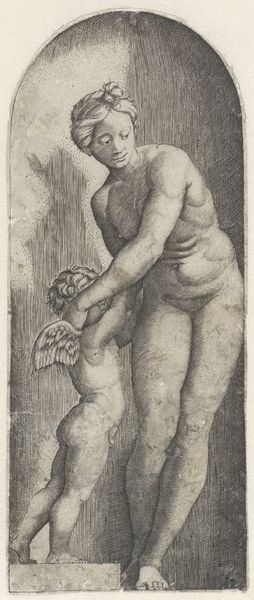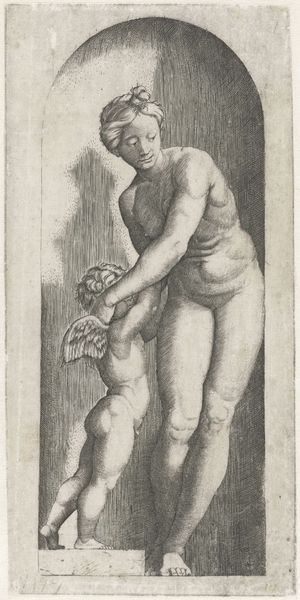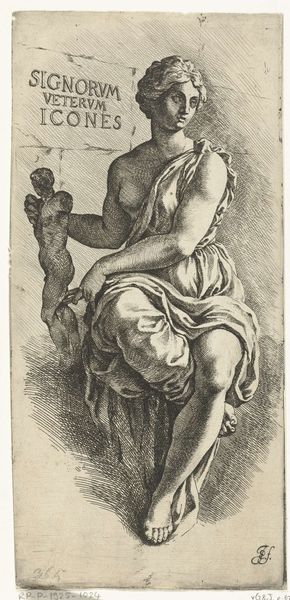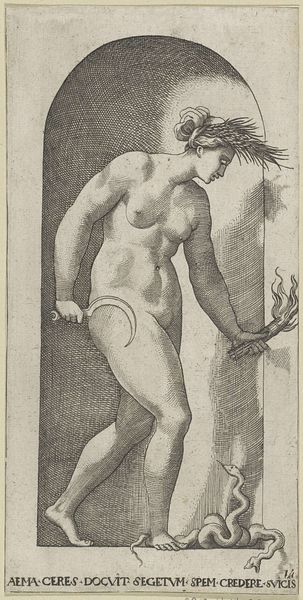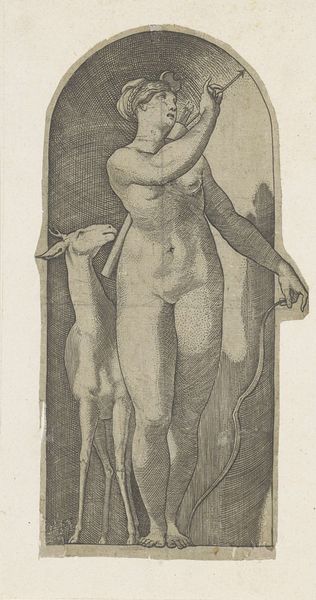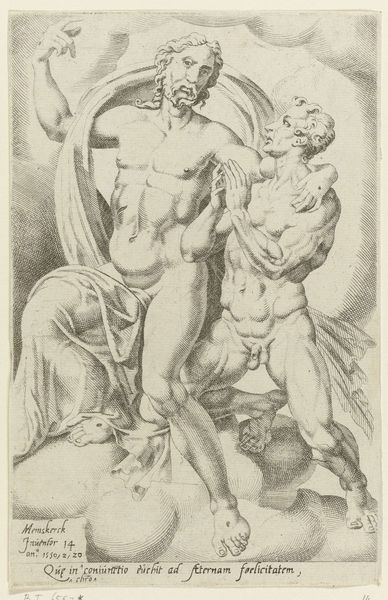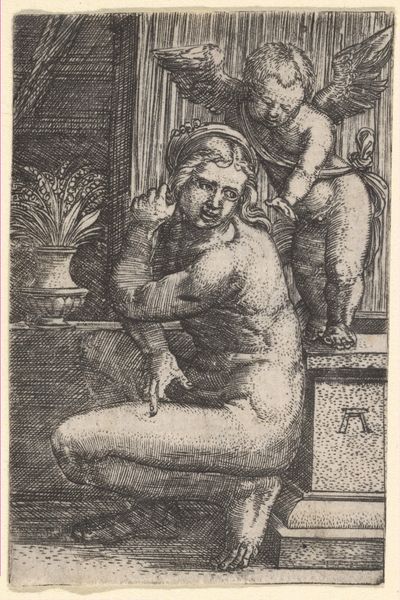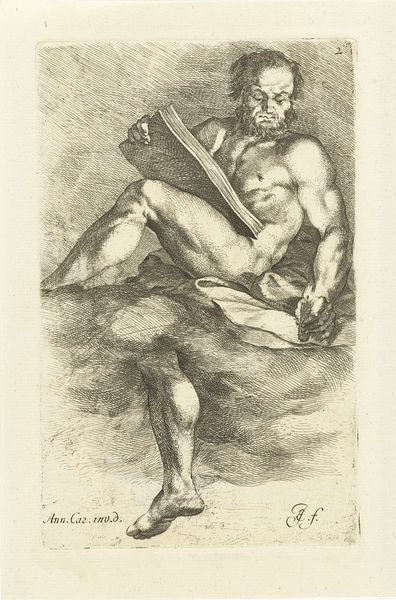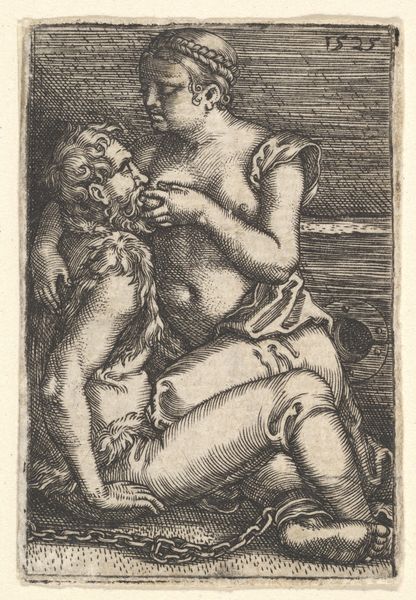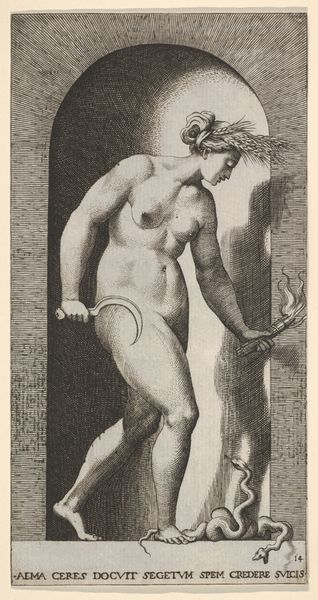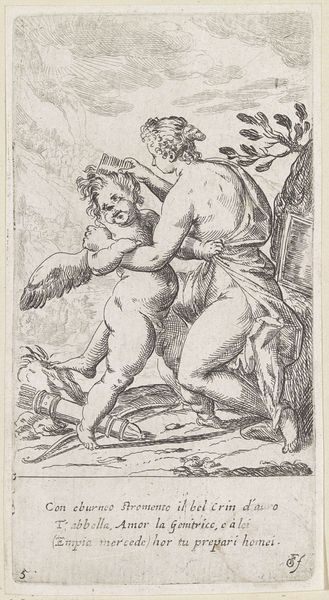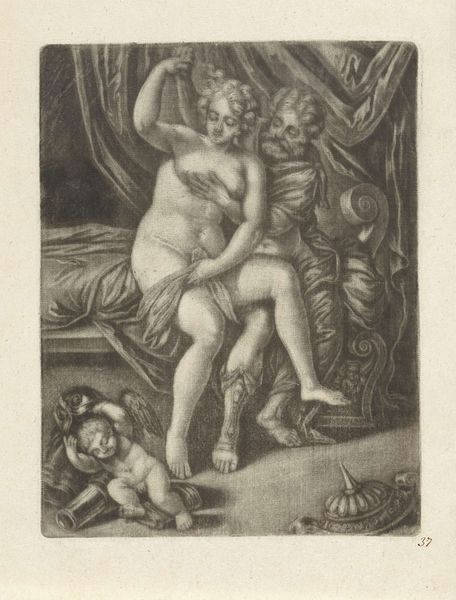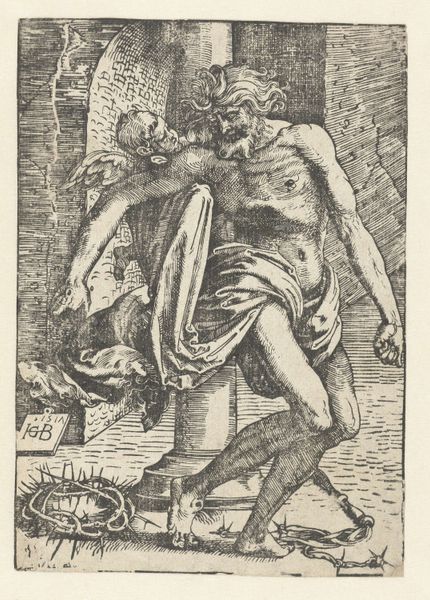
print, engraving
#
portrait
# print
#
figuration
#
portrait reference
#
portrait drawing
#
italian-renaissance
#
nude
#
engraving
Dimensions: height 206 mm, width 87 mm
Copyright: Rijks Museum: Open Domain
Curator: Immediately, the texture is what grabs me – that densely worked engraving! Editor: Indeed. We're looking at Marcantonio Raimondi’s print, "Venus en Amor staand in nis," created between 1510 and 1527. This engraving, currently housed in the Rijksmuseum, showcases the Italian Renaissance fascination with classical mythology. Venus and Cupid locked in embrace – but it’s how the artist manipulates the metal that intrigues me. Curator: Absolutely. Notice the controlled chaos of lines, hatching and cross-hatching—it’s a masterclass in manipulating the burin to create light and shadow. There's a real labor evident in building the form, it's not a quick sketch. Editor: It highlights the shift in printmaking from a purely reproductive medium to a more expressive art form. Raimondi, while known for his engravings after Raphael, clearly puts his stamp on this piece. The print could circulate Raphael's ideas but did so within the burgeoning print market in Italy. Curator: You can see the interest in classical forms – that niche framing the figures has ancient roots. What strikes me is the dynamic composition achieved purely through line. The tension between Venus and Cupid, created by the interplay of limbs, suggests an active emotional exchange captured through purely manual means. Editor: Agreed. The work's existence speaks to the flourishing visual culture of the period. Consider the role such prints played; circulating imagery, influencing taste, and contributing to artistic dialogues. Museums today inherited these complicated conditions for producing art. Curator: And that circulation underscores the accessibility of imagery in the 16th century, but access to producing this level of engraving would be drastically less available. I can't help but marvel at the hours poured into this matrix to generate so many impressions! Editor: Reflecting on it, I am struck how its history invites discussions about patronage, artistry, and the power of disseminating imagery. It provides insights into artistic production, the marketplace, and social values. Curator: For me, seeing that handcrafted complexity is a vital reminder of how human labor infuses everything we consider 'art,' changing and evolving through time, and with shifting societal needs.
Comments
No comments
Be the first to comment and join the conversation on the ultimate creative platform.
